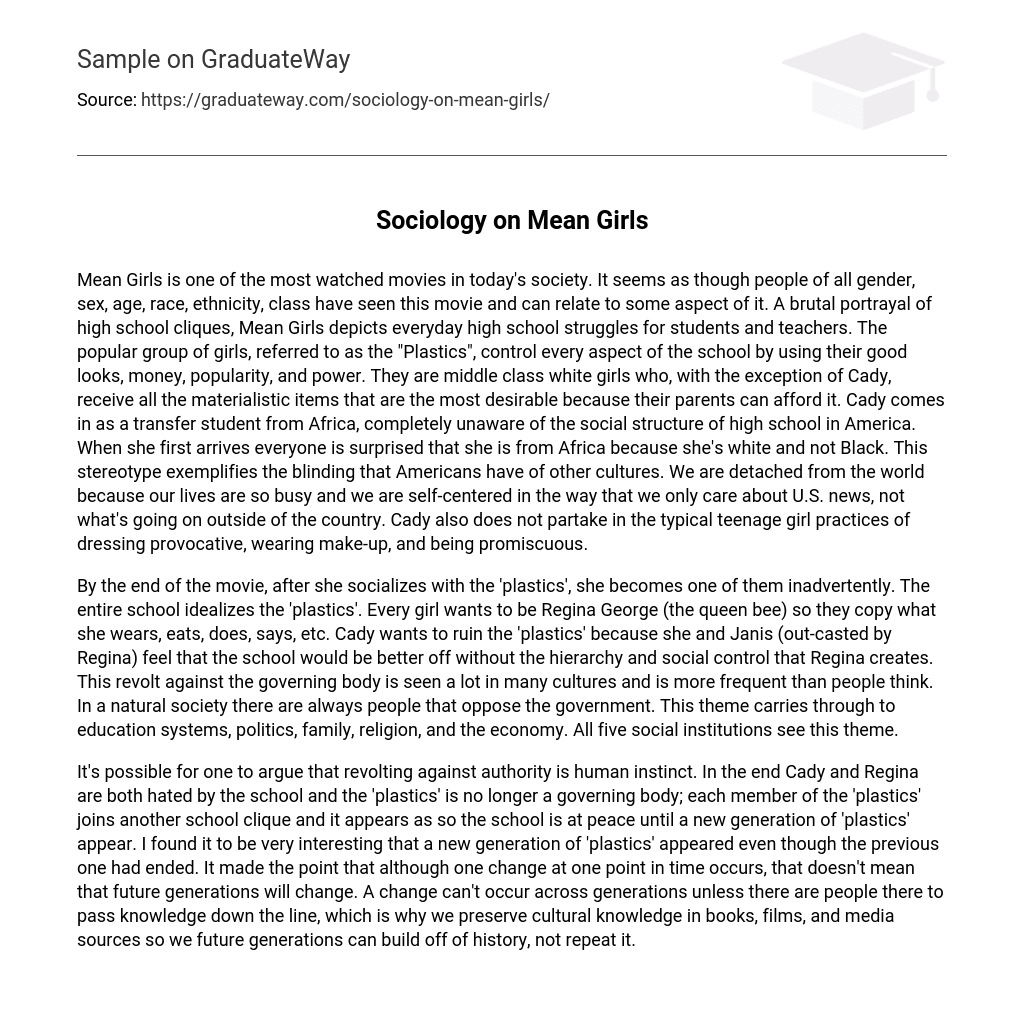Mean Girls is one of the most watched movies in today’s society. It seems as though people of all gender, sex, age, race, ethnicity, class have seen this movie and can relate to some aspect of it. A brutal portrayal of high school cliques, Mean Girls depicts everyday high school struggles for students and teachers. The popular group of girls, referred to as the “Plastics”, control every aspect of the school by using their good looks, money, popularity, and power. They are middle class white girls who, with the exception of Cady, receive all the materialistic items that are the most desirable because their parents can afford it. Cady comes in as a transfer student from Africa, completely unaware of the social structure of high school in America. When she first arrives everyone is surprised that she is from Africa because she’s white and not Black. This stereotype exemplifies the blinding that Americans have of other cultures. We are detached from the world because our lives are so busy and we are self-centered in the way that we only care about U.S. news, not what’s going on outside of the country. Cady also does not partake in the typical teenage girl practices of dressing provocative, wearing make-up, and being promiscuous.
By the end of the movie, after she socializes with the ‘plastics’, she becomes one of them inadvertently. The entire school idealizes the ‘plastics’. Every girl wants to be Regina George (the queen bee) so they copy what she wears, eats, does, says, etc. Cady wants to ruin the ‘plastics’ because she and Janis (out-casted by Regina) feel that the school would be better off without the hierarchy and social control that Regina creates. This revolt against the governing body is seen a lot in many cultures and is more frequent than people think. In a natural society there are always people that oppose the government. This theme carries through to education systems, politics, family, religion, and the economy. All five social institutions see this theme.
It’s possible for one to argue that revolting against authority is human instinct. In the end Cady and Regina are both hated by the school and the ‘plastics’ is no longer a governing body; each member of the ‘plastics’ joins another school clique and it appears as so the school is at peace until a new generation of ‘plastics’ appear. I found it to be very interesting that a new generation of ‘plastics’ appeared even though the previous one had ended. It made the point that although one change at one point in time occurs, that doesn’t mean that future generations will change. A change can’t occur across generations unless there are people there to pass knowledge down the line, which is why we preserve cultural knowledge in books, films, and media sources so we future generations can build off of history, not repeat it.





